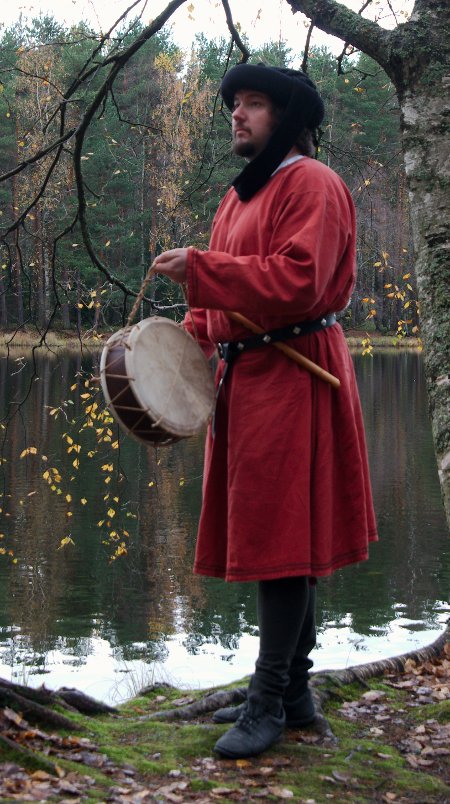
Some basic linen tunics
2012
2012
...And finally I got
myself to make the basic linen tunic I should really have
begun with. Oh well, better late than never, right?
Like the blue houppelande, this tunic was originally made for Academia de la Danza, as Jarno needed something cool and practical to wear. The material came from Tippet.fi-webstore. Vivid hue of rust red in linen might be a bit unlikely considering the period dyeing techniques, but then again the color itself is quite appropriate.
The pattern is a basic t-shaped tunic with four gores beginning at the waist line. I shaped the armhole and the sleevehead slightly to give it a better fit and make it more comfortable.
All the seams are first sewn on machine and then flat-felled by hand, flat felled seams being so neat in linen despite the extra work. Anyway, I finished most of the hand sewing on car on our winter holiday and the rest on bus on way to work and back later, and linen is wonderfully fast to sew.
Like the blue houppelande, this tunic was originally made for Academia de la Danza, as Jarno needed something cool and practical to wear. The material came from Tippet.fi-webstore. Vivid hue of rust red in linen might be a bit unlikely considering the period dyeing techniques, but then again the color itself is quite appropriate.
The pattern is a basic t-shaped tunic with four gores beginning at the waist line. I shaped the armhole and the sleevehead slightly to give it a better fit and make it more comfortable.
All the seams are first sewn on machine and then flat-felled by hand, flat felled seams being so neat in linen despite the extra work. Anyway, I finished most of the hand sewing on car on our winter holiday and the rest on bus on way to work and back later, and linen is wonderfully fast to sew.
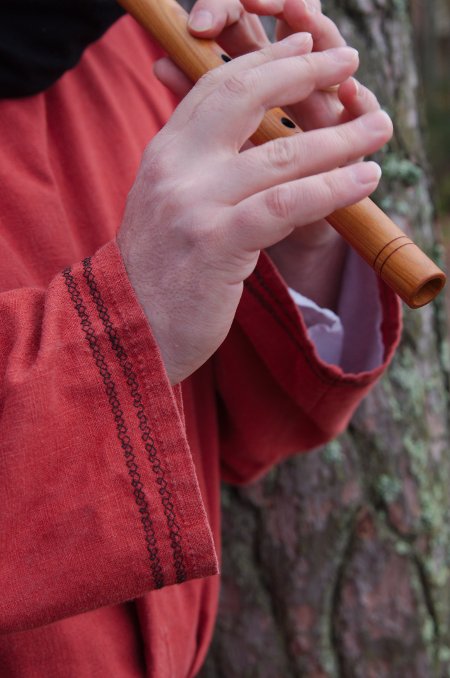
Later I was inspired to add two rows of decorative stitching on neck, sleeves and hem. This stitch is one of the very few decorative ones that my dear old home sewing machine makes, and as you can see it's not quite even, but it doesn't matter. The effect is nice enough with minimum work.
The tunic turned out such a long-needed, functional garment that my next Tippet order included the same linen in green.
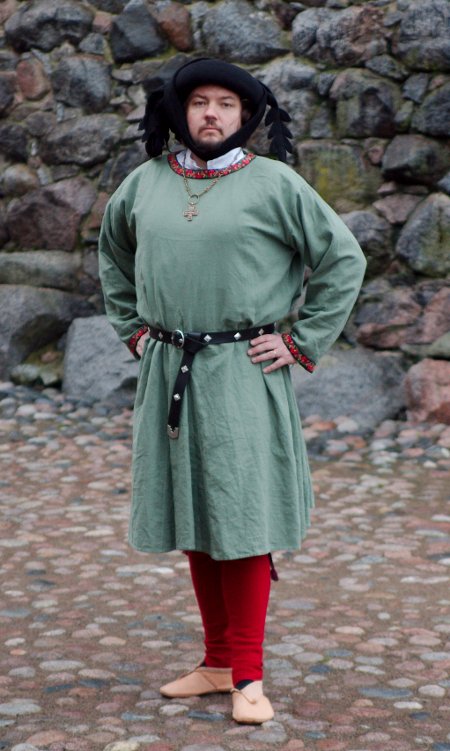
2012
The green tunic has the same cut, and is also hand-finished.
I have not liked the thought of a fancy embroidered ribbon on plain linen clothes in past, as I feel anything with finer details should really be made of a finer material as well. Now, however, I succumbed to the lazy trick of buying a fancy ribbon. At least it's not shiny nor has any metal thread.
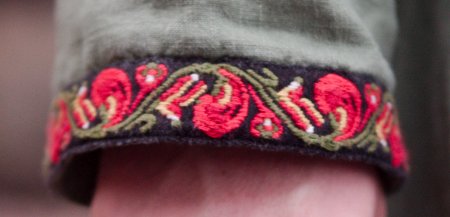
I prewashed the ribbon to avoid shrinking later, but it still needs to be pulled hard when wet not to shrink. I attached the ribbon partly on machine, partly by hand. With hand-sewing and some steaming it molded around the curved neckline with only seams on the shoulders.
I also made two pairs of short hose to wear with the tunics. Of these you can read more on medieval accessories.
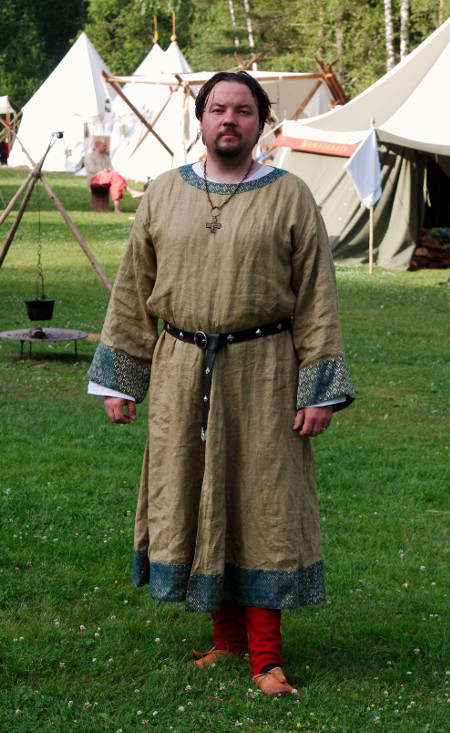
2014
The third version of the same
model, just a bit longer to look more dignified and less peasant
dress (and because that piece of linen on bargain bin was a long
one), and with a slit ant center front and center back for ease
with the length.My idea was to make another light summer tunic suitable for camp life (read: washable) but perhaps with just a bit bling for the court and the feast. The neutral colored linen definitely needed some bling for that, so I decided to go for the old cheap trick of adding colorful borders of a finer material. When buying the linen I had not even remembered this "oriental" charity shop tablecloth, but happily it turned up from my stash when I searched for something to match. As you can see, it matched, so I was willing to overlook that it screams "shiny polyester".
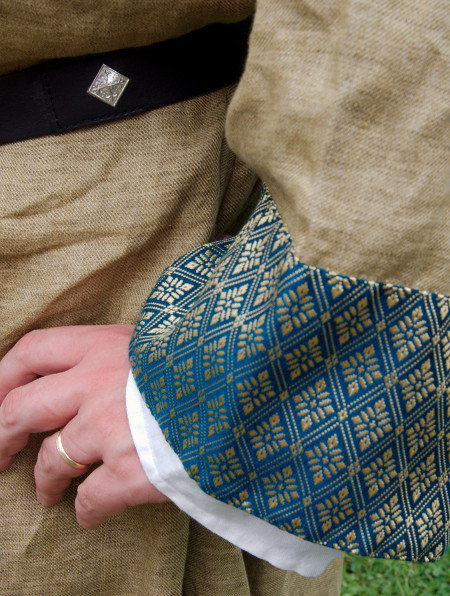
Another downside of the border material was that it frayed very easily. I tried to prevent this by overlock stitching all the edges and top-stitching them by hand (although not very densely). They still do shoot out loose threads on wear, but of course I can in theory replace them if they get really untidy.
I machine sewed the seams as usual and flat-felled them by hand. I shaped the hem border at the seams, but it doesn't settle perfectly smooth as the linen edge had stretched and was generally uncooperative.
This tunic is not terribly historically accurate, but it was a relaxing small project, dirt cheap and easy wear.